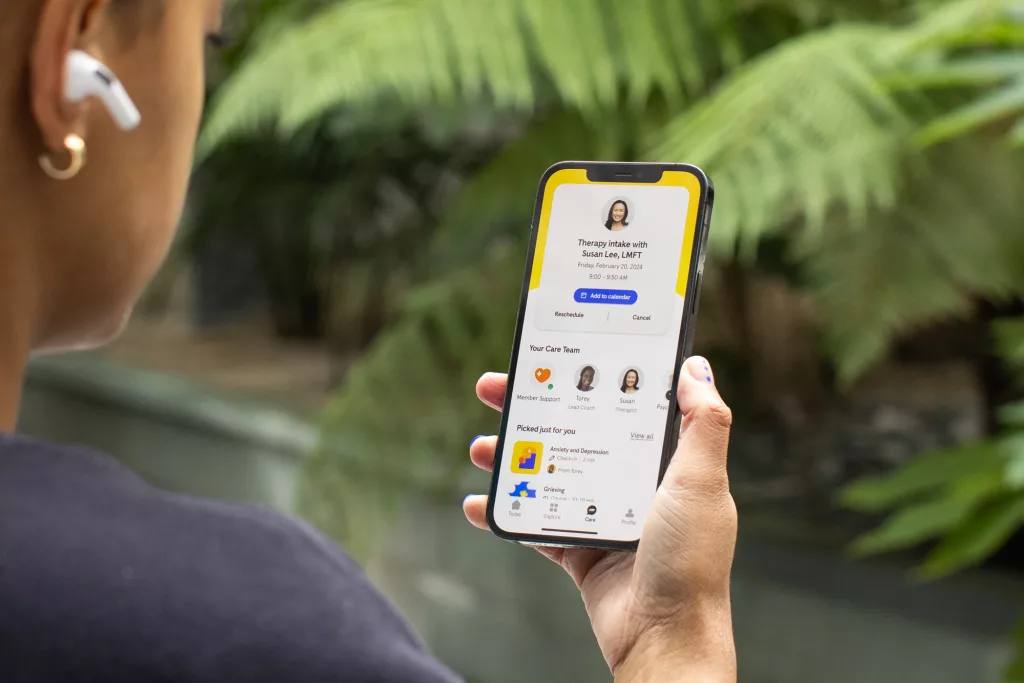Employee wellbeing needs more than a list of workplace benefits. The new year calls for a deeper look at what people need for holistic health.
The new year got off to a rocky start for many Americans, with below zero temperatures across the vast majority of the country and a large chunk of Americans fighting off the flu, COVID, RSV and colds.
But 2024 may be the year of wellness at work. Expect more companies to roll out perks and benefits—whether it’s healthy snacks, mindfulness workshops, gym memberships, flexible work schedules and mental health benefits.
“Wellbeing is not a blip but a trend that will be long-lasting,” says Tracy Brower, a Michigan author of The Secrets to Happiness at Work and a sociologist studying work life fulfillment, happiness and the future of work. “It’s going to make a really big difference in terms of competitive advantage in attracting and retaining employees.”
In the past, wellbeing was relegated to health benefits, such as a gym membership or smoking cessation course. Today, it’s about holistic health, and much of it has to be with emotional and psychological wellbeing. At least 83% of employees count wellbeing at work as just as important as their salary.
But there’s a disconnect between leaders and employees when it comes to wellness at work. At least 55% of workers say their employer thinks their workplace environment is more mentally healthy than it actually is, according to the American Psychology Association. In fact, less than a third of employees say those benefits offered align with what they actually need.
Employers face big challenges in delivering the calm and health people need at work. The world is rife with everything from inflation and income inequality to racial inequity and lingering tension between workers and leaders. Long after the pandemic, people continue to struggle with stress, burnout, and loneliness and still half of people say work stress impacts their mental health. People simply lack joy and satisfaction and feel unappreciated.
So how do employers truly reach their workers in a meaningful way?
Rolling out a slew of health benefits and calling it good may not be the answer. What’s more important: changing how people feel when they’re at work, says Courtney Murphy, founder of WorkWell People Solutions and author of Life After Burnout: Reclaim, Recover, Renew.
“It doesn’t matter what benefits they put on a list or on a website if the supervisor is beating you down, if your workload is unbearable, if you see something in your work situation is completely unfair,” says Murphy.

Employers who want to create a healthy workplace must give people a sense of control, perceived fairness, community, a reasonable workload, opportunity for advancement and plenty of rewards and recognition.
Compensation is a big problem, says Murphy. There is a subset of people who don’t perceive any fairness when company leaders get massive salaries and their own salaries barely inch up each year. The historical view of HR was that it offered motivation to move up the corporate ladder. Now? People view it as unobtainable and actually demotivating, Murphy says.
Changing that perceived fairness and really recognizing peoples’ contribution at work can make an impact.
“There’s some really great research that shows just feeling seen, feeling known and feeling understood can be a big deal in terms of mental wellness,” says Brower. “So managers, when they are present and accessible and really tuning into people, it makes a huge difference.”
Leaders don’t necessarily have to become social workers, but they do need to pay attention to their staff members and routinely check in with them. And if they do discover that somebody’s struggling, they don’t necessarily need to solve the problem but they can help connect them to resources that can help.
Most managers aren’t equipped for those kinds of conversations. They’re often overwhelmed and underskilled. So a big way to impact wellness at work boils down to training your leaders. If they get in touch with themselves, they can be more empathetic to their teams. If they learn self awareness and improve their own wellbeing, dig into their purpose, vulnerabilities, values and potential, then they can begin to look for it and see it in the people they manage, says Ira Wolfe, a longtime HR consultant, author, and speaker on the future of work.
Before simply jumping to roll out a host of wellness benefits—Pet insurance? Half-day Fridays? In-office massages?—leaders would be wise to not just throw everything on the wall and see what sticks.
Check in with employees to see what truly matters to them in their workplace. That will vary depending on the teams, the people, the company. Small companies should start small, and large companies can weigh the interest, impact and effort with each benefit or service. “Focus on piloting things and trying things,” says Brower. Financial stress is increasingly a big issue for today’s workforce, as people navigate higher prices, uneven wage growth and record credit card debt. At least 57% of people say finances are the top cause of stress in their lives, according to a Pricewaterhouse-Coopers 2023 financial wellness survey. “People are struggling. They’re living paycheck to paycheck, and even with increased wages, they’re still struggling,” says Wolfe.

Kelly Sikkema, Unsplash.
More employers are listening, and they’re rolling out financial wellness benefits. This could be such services as emergency savings funds, education, or personal coaching.
While mental health is still a huge problem in the workforce, getting employees help continues to be tricky for employers. Most people don’t access the mental health benefits offered by employers. Experts say just 3% to 10% of people tend to use those employee assistance programs, which offer short-term coaching, counseling and therapy. That makes it hard for employers to ensure their teams are getting the help when they need it for personal or professional problems.
It will be important for HR managers to ensure people know that therapy through the company is private—that employers won’t check which employee has accessed what service— and they must make accessing those services simple. When people are stressed or suffering from mental health concerns, they may give up if getting help is cumbersome. It’s best if there’s one “front door” that people can go to access services, one provider they work with and easy navigation, says Paula Allen, senior vice president at TELUS Health, a health and wellbeing provider.
For some employers, it’s giving people a single app and on-demand therapy. In 2021, Headspace, the company behind the meditation app, purchased a company called Ginger to enable employers to give not only meditation and mindfulness tools to workers but also on-demand therapy, coaching and psychiatry—for a quick session via their phones.

Headspace.
Whether it’s easier access to therapy or ensuring managers check in and really care, employers will be zeroing in this year to ensure they find what matters to the people at work. Wellness is more important than ever, both for the individuals who make up our workforce at large but also for a company’s brand. “You know, people talk about how you support them,” says Allen, “and what you do now really does matter.”
